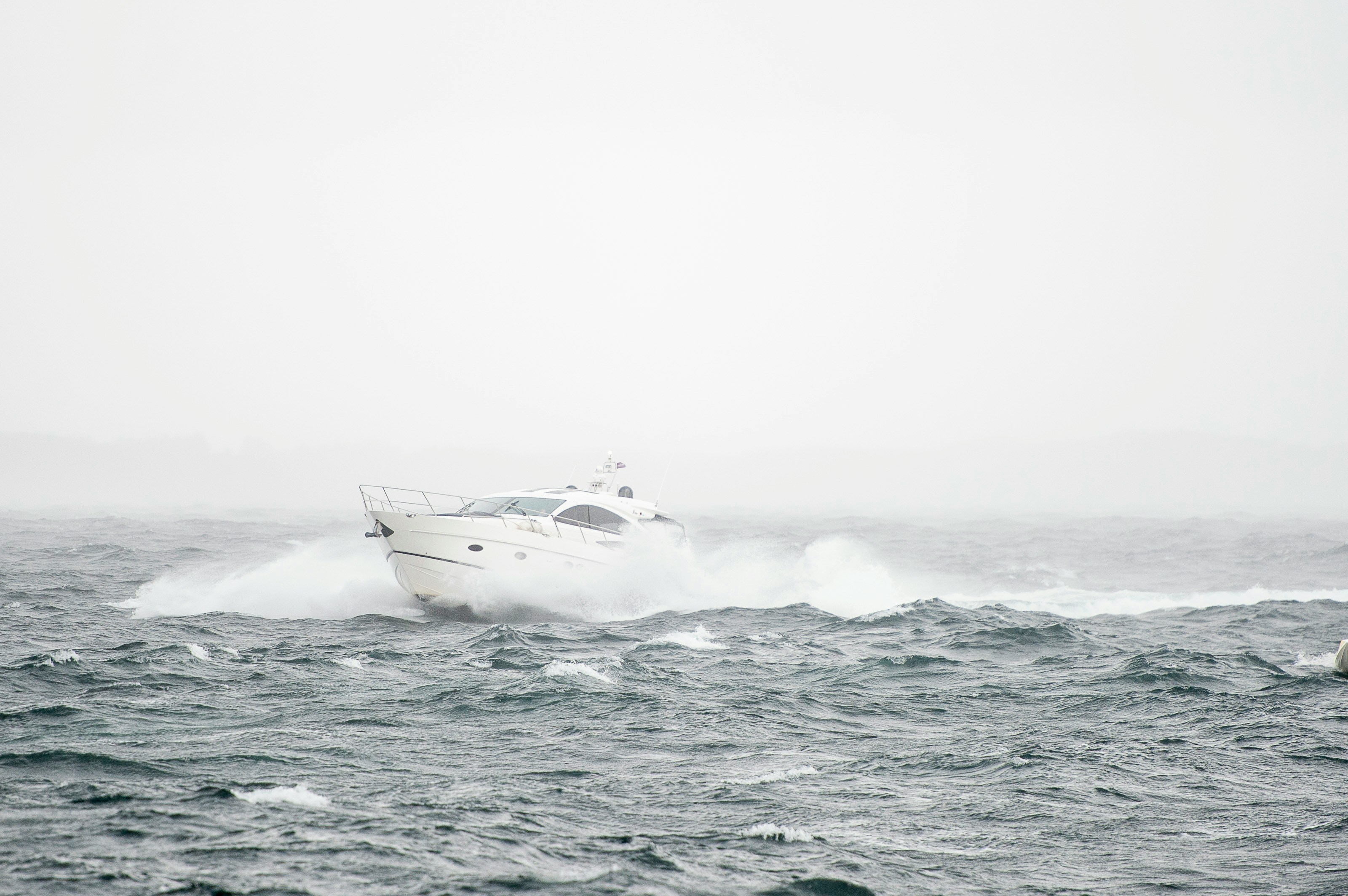Ask any boater and they’ll tell you…getting stuck in a storm while out on the water is one of the scariest situations you can face. One minute it’s calm and sunny, the next you’re staring down dark clouds, high winds, and rough waves.
The good news? With a little preparation (and a level head), you can get through it safely. Let’s break down how to prep your boat ahead of time, how to spot the signs of bad weather, and what to do if you ever find yourself caught out there.
Prepping Your Boat Before the Storm Hits
The best way to deal with a storm is to be ready before it even shows up. That means bringing the right gear, keeping an eye on the forecast, and knowing when it’s smarter to just stay off the water.
And if a hurricane or major storm is in the forecast? Don’t risk it. Your boat should be out of the water, and you should be somewhere safe.
Here are a few must-dos:
- Get the boat out of the water (if you can). Smaller boats can usually be trailered inland and tied down. The farther away from the coast, the better.
- Take loose gear off the boat. This includes things like cushions, sails, dinghies, electronics, and more. If the wind can grab it, you should remove it.
- Secure the stuff you can’t remove. Tightly tie down anything you can’t remove.
- Unplug everything. If you’re hauling out, disconnect the electrical system and take out the battery. Store portable fuel safely.
- Double up dock lines. Can’t haul it? Make sure your lines are extra secure, add chafe guards, and check your cleats.
- Think about boat insurance. Even the best prep can’t stop everything. Insurance helps protect your boat (and your wallet) if a storm causes damage.
» MORE: Understanding Named Storm Hurricane Coverage
Spotting Bad Weather
Not all storms give you a big warning. Hurricanes are tracked days in advance, but pop-up storms? Not so much. Here are a few signs you should never ignore:
- Check in with NOAA. Tune in to the National Oceanic and Atmospheric Administration’s marine weather radio for reliable updates.
- Look at the sky. Dark clouds or lightning in the distance? That’s your cue to head in.
- Pay attention to the wind. A sudden change in direction or temperature usually means something is moving in.
- Watch your barometer. A quick pressure drop almost always signals rain or a storm.
What the Warnings Really Mean
Weather alerts can sound intimidating, but here’s what they actually mean for you on the water:
- Small Craft Advisory: Choppy seas and winds greater than 24 mph.
- Gale Warning: Stronger winds, 39–54 mph.
- Storm Warning: Rough seas with winds between 55–73 mph.
- Hurricane Warning: Winds 74+ mph.
If You’re Caught in a Storm
Even with the best planning, sometimes storms sneak up on you. If you do get stuck out there, here’s how to ride it out as safely as possible:
- Life jackets on. No exceptions. Everyone should wear one.
- Slow down and angle into waves. Take big waves at about 45 degrees to avoid being swamped. Smaller boats may need to go straight into them.
- Keep passengers low and centered. This makes the boat more stable and reduces the chance of anyone going overboard.
- Turn on your lights. Visibility gets bad fast, and you’ll want other boaters to see you.
Stay Safe and Covered
While preparation makes a huge difference, you can’t control Mother Nature. That’s where good boat insurance comes in. It’s there to back you up when things don’t go as planned.
Want some extra peace of mind? Get a quick, no-stress quote today with SkiSafe and make sure you’re covered the next time you hit the water.

